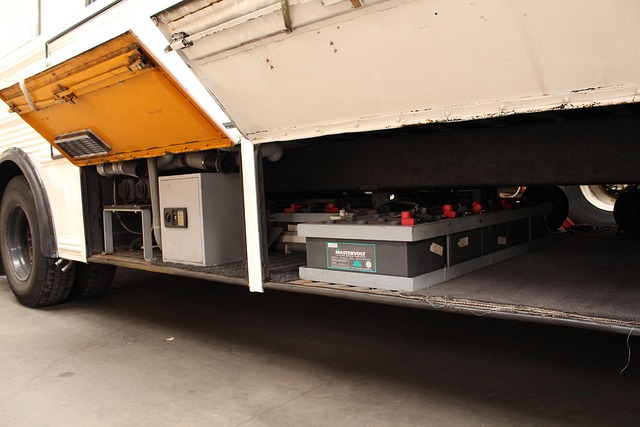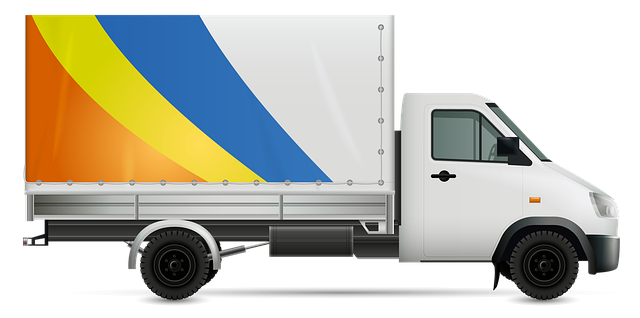Looking to register your car in California? This comprehensive guide walks you through the process, ensuring a smooth transition. From understanding the state’s requirements for car registration to gathering essential documents, this step-by-step tutorial covers it all. We’ll also teach you how to use a DMV VIN verifier to confirm your vehicle’s identity and complete the necessary forms efficiently. Get ready to hit the road legally!
- Understand Requirements for Car Registration in California
- Gather Necessary Documents for Car Registration
- Visit the DMV to Register Your Vehicle
- Verify Vehicle Identity Using VIN (Vehicle Identification Number)
- Complete and Submit Required Forms for Registration
Understand Requirements for Car Registration in California

Before registering your car in California, it’s crucial to understand what’s required. The state Department of Motor Vehicles (DMV) mandates several key steps for ensuring a smooth registration process. One essential step is verifying the Vehicle Identification Number (VIN). This unique 17-character code acts as a fingerprint for your vehicle and plays a critical role in identifying its history, including accident records and prior ownership.
In California, you can meet this requirement using various methods, including a mobile VIN verification service. These services allow you to check the VIN online or through a mobile app, offering a convenient and often faster alternative to traditional DMV visits. A mobile VIN inspection or verifier helps streamline the process by providing instant access to vehicle data, ensuring your car is eligible for registration.
Gather Necessary Documents for Car Registration

Before you begin the registration process, ensure you have all the required documents. The California Department of Motor Vehicles (DMV) requires a variety of paperwork to verify your vehicle’s details and your identity. This includes the vehicle’s title, which you’ll need to present if you’re the owner, or proof of ownership from a lienholder if there’s a loan on the car. Don’t forget to bring along a valid driver’s license or state ID card.
Additionally, you’ll require a DMV form for vehicle registration, which can be obtained online or in person. A crucial element is the Vehicle Identification Number (VIN) inspection. This can be done using a mobile VIN verifier or by visiting a designated location for a formal VIN inspection. The process involves verifying the VIN on your car’s registration and title records to ensure they match, ensuring the vehicle’s authenticity and helping to prevent fraud.
Visit the DMV to Register Your Vehicle

To begin the process of registering your vehicle in California, you’ll need to visit a local Department of Motor Vehicles (DMV) office. This is where you’ll officially register your car and obtain the necessary documents. Before heading to the DMV, ensure that all required paperwork is in order, including proof of ownership and any relevant insurance information. You can also bring along a mobile vin verifier to facilitate the process, as this will help verify the vehicle’s history and identification number (VIN). This step is crucial for ensuring you meet all legal requirements for car registration in California.
At the DMV, one of the key tasks involves conducting a VIN inspection to confirm the vehicle’s details match those on record. A mobile vin verification service can prove invaluable here, as it streamlines the process and reduces potential errors or delays. The DMV staff will guide you through the steps, which may include filling out registration forms and providing additional documentation, such as proof of residency. By following these procedures, you’ll be well on your way to completing the car registration process successfully.
Verify Vehicle Identity Using VIN (Vehicle Identification Number)

Before registering your vehicle in California, it’s crucial to verify its identity using the Vehicle Identification Number (VIN). This unique 17-character code acts as a fingerprint for your car and is essential for ensuring that the vehicle is genuine and not stolen. A reliable method for this verification is through a mobile VIN verifier or a digital vin inspection tool. These tools enable you to cross-reference the provided VIN with official databases, confirming the vehicle’s history and specifications.
Using a mobile VIN verifier app allows you to quickly scan the VIN plate on your car and instantly gain access to detailed information, including the vehicle’s make, model, year, and potential recall notices. This step is critical as it helps prevent fraud and ensures that you’re registering a legitimate vehicle, which is a requirement enforced by the California Department of Motor Vehicles (DMV).
Complete and Submit Required Forms for Registration

To complete the registration process for your car in California, you’ll need to gather and submit a series of required forms. The first step involves obtaining an accurate Vehicle Identification Number (VIN) verification from a trusted source. Many individuals opt for a mobile VIN verifier, which can quickly and conveniently check the VIN’s authenticity against state records. This is crucial as the VIN is essential for identifying your vehicle and ensures that all registration documents are in order.
Once you have confirmed the VIN, fill out the necessary forms, including the California Vehicle Registration Application. Provide detailed information about your car, such as make, model, year, and color. Additionally, ensure you submit any required fees along with the application. The Department of Motor Vehicles (DMV) will process the request, and upon approval, you’ll receive a registration certificate, making your vehicle legally registered in California.
Registering a car in California is a straightforward process that requires understanding the necessary steps and gathering all the required documents. By visiting your local DMV, verifying your vehicle’s identity using a VIN checker, and completing the relevant forms, you can ensure a smooth registration experience. Remember to keep your documentation up-to-date for future reference and to maintain legal compliance. With these simple steps, you’ll be on the road in no time, enjoying your newly registered California vehicle.
